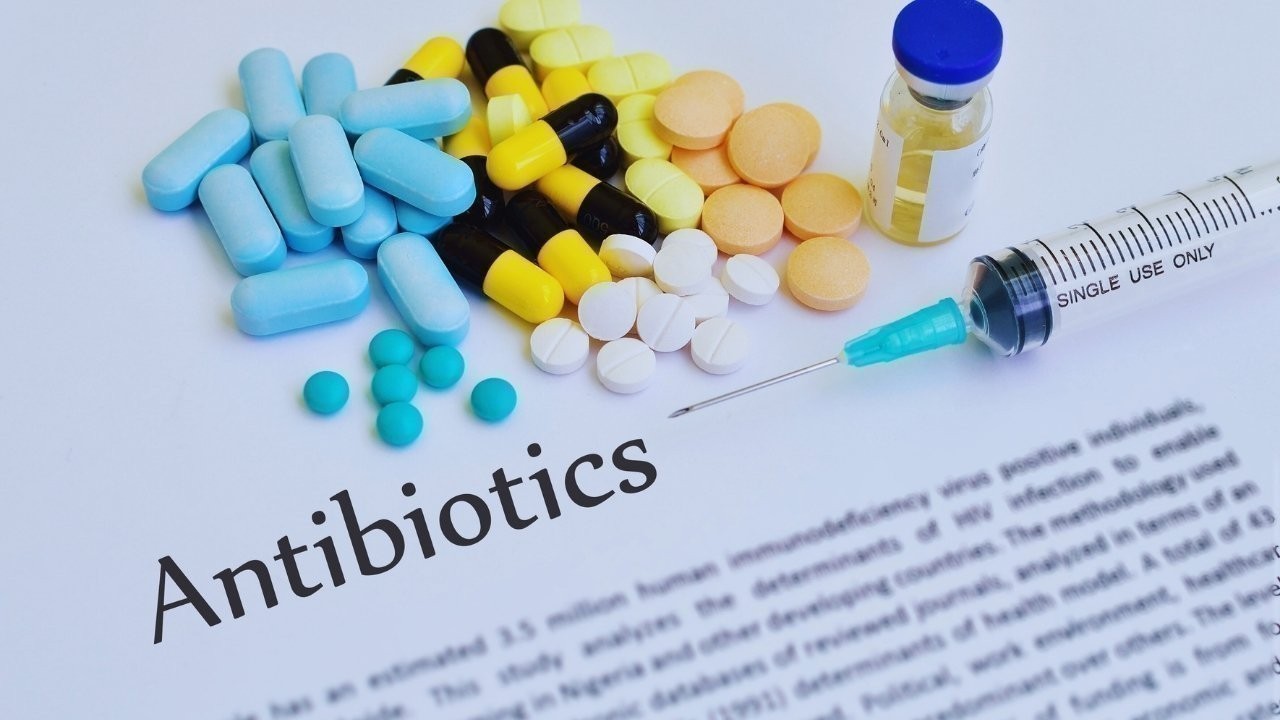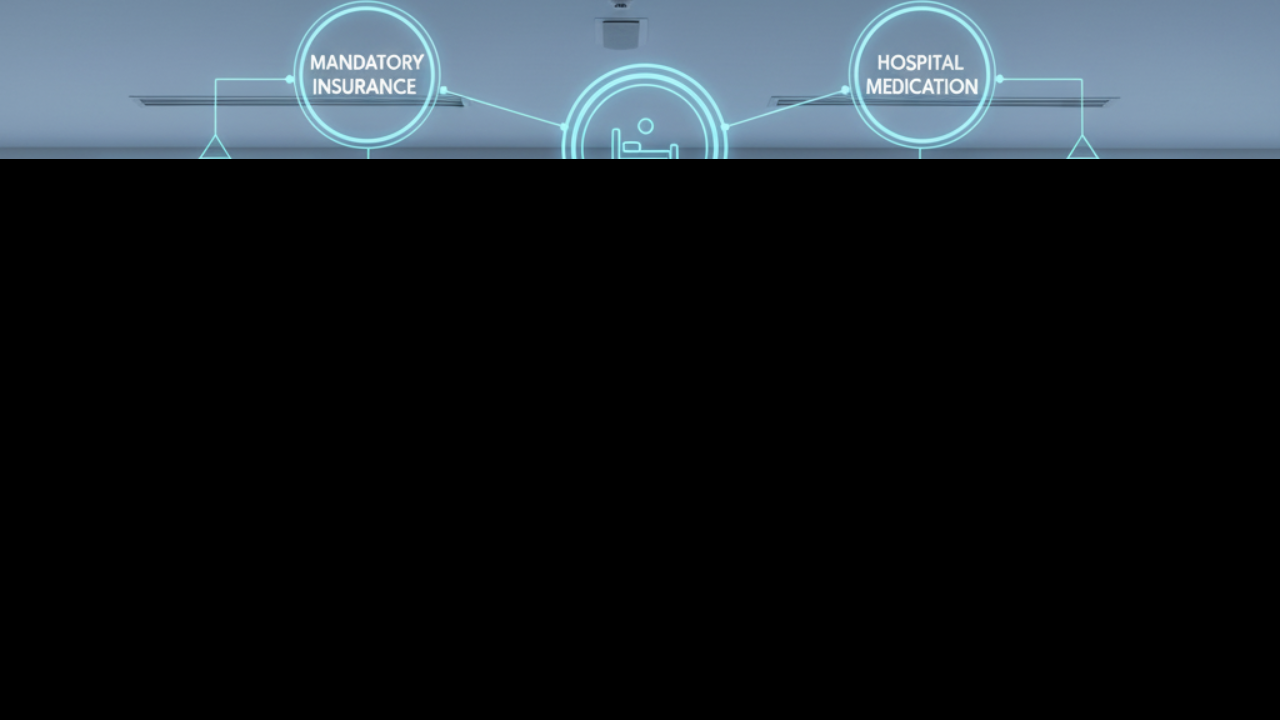
Post by : Anish
Antimicrobial resistance (AMR) has become one of the most significant challenges in modern medicine. The widespread misuse and overuse of antibiotics have accelerated the evolution of resistant bacterial strains, making previously treatable infections potentially life-threatening. Estimates suggest that if current trends continue, tens of millions of deaths could occur worldwide by 2050 due to antibiotic-resistant infections.
This pressing reality has fueled the search for alternative therapies that can complement or replace conventional antibiotics. Scientists, medical professionals, and public health authorities are exploring a range of strategies, from harnessing naturally occurring bacteria-targeting viruses to advanced gene-editing technologies. The goal is to ensure that infections remain treatable while reducing the global dependence on traditional antibiotics.
Bacteriophages, often simply called phages, are viruses that specifically infect and destroy bacterial cells. Discovered over a century ago, phage therapy was largely overshadowed by the widespread adoption of antibiotics. However, with the rise of resistant bacteria, phages have regained attention as a precise, natural alternative.
Modern research has enabled scientists to engineer phages to enhance their efficiency against resistant bacterial strains. These engineered phages can target specific pathogens, reducing collateral damage to beneficial microbiota and minimizing side effects. Some approaches involve using phage-derived structures to deliver antimicrobial compounds directly into bacterial cells, bypassing the mechanisms bacteria use to evade treatment.
Phage therapy is particularly promising for treating infections that do not respond to conventional antibiotics, including chronic wounds, bloodstream infections, and certain gastrointestinal infections. Its precision and adaptability make it a vital component of the future antimicrobial arsenal.
Antimicrobial peptides are small proteins naturally produced by organisms as part of their innate immune defense. They function by disrupting bacterial cell membranes, effectively killing pathogens while leaving human cells unharmed.
Advancements in biotechnology have allowed researchers to synthesize AMPs with enhanced stability and effectiveness. These synthetic peptides can be incorporated into nanomaterials or pharmaceutical formulations to improve delivery and targeting. Studies show that AMPs can combat a wide spectrum of bacteria, including strains resistant to multiple antibiotics.
Beyond treatment, AMPs hold potential in preventive applications, such as coatings for medical devices or food packaging to prevent bacterial contamination. Their versatility and efficacy position them as a promising solution to antibiotic resistance.
Nanotechnology introduces a new dimension to antimicrobial treatment by creating materials at the scale of atoms and molecules that can directly interact with bacteria. Nanoparticles can be engineered to penetrate biofilms—dense layers of bacteria that are notoriously resistant to antibiotics—and disrupt their structure.
Moreover, nanomaterials can serve as carriers for antimicrobial agents, delivering drugs precisely to infection sites and reducing systemic side effects. This targeted approach allows for lower doses of drugs, minimizes toxicity, and enhances therapeutic outcomes.
The integration of nanotechnology into antimicrobial strategies also opens possibilities for combining multiple therapeutic agents in a single delivery system, increasing the effectiveness of treatment while minimizing the risk of resistance development.
The human microbiome plays a crucial role in maintaining health and defending against infections. Probiotics, which are beneficial live bacteria, and synbiotics, which combine probiotics with nutrients that support their growth, can help restore and maintain a healthy microbial balance.
These interventions work by outcompeting harmful bacteria, strengthening the immune system, and reducing inflammation. In clinical settings, probiotics and synbiotics have shown promise as adjunct therapies for gastrointestinal infections, antibiotic-associated diarrhea, and certain chronic conditions.
In addition to their therapeutic benefits, these microbiome-focused strategies represent a preventive approach to AMR by reducing the reliance on antibiotics and promoting natural resilience against pathogens.
CRISPR-Cas technology, widely recognized for its gene-editing capabilities, is being adapted to target antibiotic-resistant bacteria. By designing CRISPR systems that can precisely cut bacterial DNA, scientists aim to disrupt resistance genes, rendering pathogens susceptible to existing antibiotics.
This approach allows for highly targeted treatment, potentially eliminating resistant strains without affecting beneficial bacteria. While still in experimental stages, CRISPR-based antimicrobials could transform the treatment of persistent infections and provide a powerful tool in managing AMR.
Challenges remain, particularly in delivering CRISPR systems efficiently to infection sites and ensuring precise targeting without unintended consequences. Nevertheless, the potential of this technology marks a revolutionary step in antimicrobial therapy.
Vaccination remains one of the most effective tools in preventing infectious diseases. By reducing the incidence of infections, vaccines indirectly reduce the use of antibiotics and curb the development of resistance.
Efforts to develop vaccines against bacterial pathogens, including drug-resistant strains, are underway globally. Vaccines targeting pathogens such as Streptococcus pneumoniae and Haemophilus influenzae have already demonstrated success in lowering infection rates and associated antibiotic use.
Expanding the range of bacterial vaccines, including those targeting multidrug-resistant organisms, could significantly reduce the global burden of infections and enhance public health outcomes. Vaccines not only prevent disease but also limit the opportunities for bacteria to evolve resistance.
Rapid and accurate diagnosis is critical in ensuring appropriate treatment. Traditional diagnostic methods often require several days to yield results, during which patients may receive broad-spectrum antibiotics unnecessarily, contributing to resistance.
New diagnostic technologies are emerging that can quickly identify bacterial pathogens and determine their resistance profiles within hours. These innovations allow healthcare providers to prescribe targeted therapies, reducing unnecessary antibiotic use and improving treatment outcomes.
Enhanced diagnostics also play a role in public health by enabling quicker responses to outbreaks and informing policy decisions for infection control.
The environment is a significant reservoir for antibiotic-resistant bacteria. Antibiotic residues from human and animal use can enter water systems, soil, and food chains, contributing to the spread of resistance.
Environmental strategies focus on detecting and eliminating resistant microbes in wastewater, agricultural runoff, and other ecosystems. By addressing AMR at its environmental source, these approaches reduce the risk of resistant bacteria reaching human populations.
Sustainable environmental management, combined with responsible antibiotic use, is essential for a holistic approach to controlling AMR.
Strong public health policies are crucial in combating AMR. Policies promoting responsible antibiotic use, infection prevention, and investment in alternative therapies create an integrated framework for managing resistance.
International collaborations and action plans provide guidance and support for national strategies. By implementing evidence-based policies, governments can reduce antibiotic misuse, improve surveillance of resistant infections, and encourage research into novel treatments.
Public awareness campaigns, healthcare provider education, and monitoring programs further strengthen these efforts, ensuring a comprehensive response to the AMR crisis.
Antimicrobial resistance is a complex challenge requiring diverse solutions. No single intervention can address the growing threat alone. The integration of innovative therapies—including bacteriophage treatment, antimicrobial peptides, nanotechnology, probiotics, CRISPR-Cas systems, vaccines, rapid diagnostics, environmental strategies, and robust public health policies—provides a comprehensive path forward.
Global collaboration, continued research, and responsible implementation of these strategies are essential to ensure that infections remain treatable. By embracing these innovations, the medical community can safeguard public health and move toward a future where antimicrobial resistance is managed effectively, even in a post-antibiotic era.
This article is for informational purposes only. It summarizes current research and developments in antibiotic alternatives as of 2025. The efficacy and availability of the therapies discussed may vary, and clinical trials are ongoing to establish safety and effectiveness. Readers should consult healthcare professionals for medical guidance and treatment decisions.

Easy Healthcare Access in UAE Through Top Pharmacies & Apps
Explore the best pharmacies and health apps in UAE 2025. Get medications, book appointments, and acc

Navigating UAE Healthcare Costs: An Essential Financial Guide for Expats
Planning a move to the UAE? Learn to navigate the mandatory health insurance, private vs public hosp

Crucial Updates to Medical Fitness Tests for All New and Renewing UAE Residents
Planning your move to the UAE in 2025? Get the latest on mandatory medical fitness tests, required v

Finding Your Support: A 2025 Guide to Top Mental Health Therapists and Clinics in the UAE
Navigate mental wellness in the UAE for 2025. Discover highly-rated clinics, expert psychologists, a

The Ultimate UAE Heat Survival Guide: 10 Essential Hydration and Lifestyle Secrets
Master the UAE’s hot climate with these 10 proven, human-written hydration and lifestyle tips. Learn

Find Affordable Healthcare Options in Dubai & Sharjah Without Compromising Quality
Discover budget-friendly clinics in Dubai and Sharjah for expats. Get quality healthcare at affordab

Discover the Most Popular Fitness Trends Expats and Locals Are Following in UAE
Explore top fitness trends in UAE 2025 including gyms, yoga, CrossFit, and wellness activities. Stay

Effective Ways to Reduce Joint Pain and Stiffness This Winter
Learn simple ways to reduce joint pain and stiffness this winter with warmth exercises diet tips and

Facial Sculpting and Non Invasive Techniques Safe Beauty Trends for the Future
Explore facial sculpting and non invasive techniques shaping beauty care Safe affordable and natural

Body Positivity Embracing Self Love Confidence & True Beauty
Celebrate body positivity embrace self love reject false beauty ideals and discover confidence at ev

Skin Microbiome Secrets to Healthy and Balanced Skin
Explore the skin microbiome its role in skin health and simple ways to keep your skin balanced healt

Sarcopenia How Aging Steals Muscle and Ways to Stay Strong
Discover sarcopenia the silent muscle loss with age its signs causes and simple ways to stay strong

Cultural Appropriation vs Appreciation Respecting Global Traditions
Learn the difference between cultural appropriation and appreciation to respect traditions and celeb

Uniform and Rebellion How Personal Identity Thrives Within Rules
Explore how uniforms shape identity and spark subtle rebellion blending conformity with personal exp

The Unseen Labor Behind Fashion Inside the Secret Stitch
Discover the hidden world of fashion labor and the secret stitch behind every garment Honor the hand